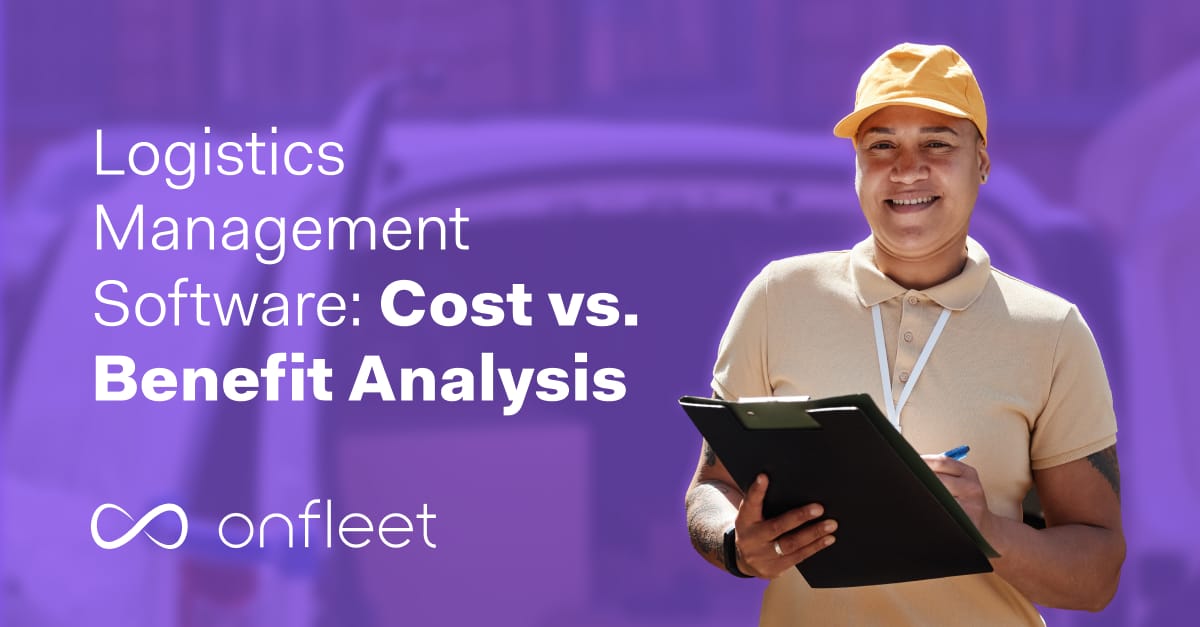
Logistics management plays an important role in the seamless functioning of the supply chain, serving as the backbone that ensures goods and services move efficiently from point A to point B. It involves the coordination of various activities, such as transportation, inventory management, warehousing, and order fulfillment, to optimize the entire process.
As businesses strive for greater efficiency and agility, the integration of advanced technologies, such as logistics software, has become imperative, leading to a paradigm shift from traditional logistics practices to the adoption of sophisticated software.
Traditionally, logistics management relied heavily on manual processes, paperwork, and human decision-making. While these methods were once the industry norm, they often resulted in inefficiencies, delays, and increased operational costs. Recognizing the need for a more streamlined approach, businesses began to embrace the digital transformation of logistics management and the creation of logistics software.
The integration of logistics management software has been a game-changer for the industry. These logistics software options use cutting-edge technologies such as artificial intelligence, machine learning, and real-time tracking to enhance every aspect of the supply chain.
From route optimization and demand forecasting to inventory control and last mile delivery, logistics management software provides a comprehensive suite of tools to ensure a synchronized and responsive supply chain.
What is Logistics Management?
Logistics, in its essence, refers to the systematic organization and implementation of the processes involved in the efficient movement and storage of goods from their point of origin to the end consumer. It is a comprehensive approach that aims to ensure that the right products are delivered to the right place at the right time, all while minimizing costs and optimizing resources. At its core, logistics management is about orchestrating a seamless and synchronized supply chain.
What Are The Major Components of Logistics?
Transportation
Transportation is a fundamental component of logistics management, encompassing the physical movement of goods from suppliers to manufacturers, and from manufacturers to distributors and retailers. Effective transportation management involves optimizing routes, selecting appropriate carriers, and ensuring timely and cost-efficient deliveries.
Warehousing
Warehouse management involves the storage of goods before they are distributed to their final destinations. Warehouses play a crucial role in inventory management, order consolidation, and protecting goods from damage. An efficient warehouse management system ensures that products are readily available for distribution when needed.
Inventory Management
Inventory management focuses on maintaining optimal stock levels to meet demand while minimizing holding costs. It involves accurate tracking of goods throughout the supply chain, from production to distribution, ensuring that products are neither overstocked nor out of stock.
Order Fulfillment
Order fulfillment is the process of receiving, processing, and delivering customer orders. This component ensures that products are picked, packed, and shipped accurately and promptly. An effective order fulfillment system contributes to customer satisfaction and loyalty.
Last Mile Delivery
Last mile delivery is the final leg of the supply chain, involving the direct delivery of goods to the end consumer. While it's considered a part of both supply chain management and logistics management, it holds a unique significance. Last mile delivery directly impacts customer satisfaction and operational efficiency, making it a critical focus area for businesses striving to meet the increasing demands for quick and reliable deliveries.
Understanding and optimizing each of these components is essential for successful logistics management. The interplay between transportation, warehousing, inventory management, order fulfillment, and last mile delivery determines the overall efficiency and effectiveness of the supply chain, ultimately influencing a company's competitiveness in the market. In the next sections of this blog series, we will dive into the role of logistics management software solutions in enhancing these components and driving operational excellence.
Importance of Efficient Last Mile Delivery in Logistics
Efficient last mile delivery stands as a pivotal element in logistics management, presenting unique challenges and opportunities for businesses. As the final stretch of the supply chain, last mile delivery is fraught with obstacles such as high operational costs, traffic congestion, and the ever-growing expectations of consumers for swift and reliable service. Striking a balance between meeting these expectations and maintaining profitability poses a constant dilemma for logistics companies engaged in the e-commerce landscape.
Onfleet emerges as a key player in addressing the intricacies of last mile delivery. Offering a suite of solutions, Onfleet tackles challenges head-on by providing real-time visibility into the delivery process. Through advanced route optimization algorithms, the platform helps navigate urban complexities, minimizing travel time and operational costs. Automated communication tools ensure customers stay informed, reducing the strain on support teams.
Onfleet's commitment to scalability, flexibility, and insightful analytics positions it as a strategic partner for businesses seeking to streamline the final leg of the supply chain.
The Benefits of Software for Logistics Management
One of the foremost advantages is the substantial improvement in operational efficiency. Logistics management software, such as Onfleet, streamlines and automates various processes, from route planning to order fulfillment, reducing manual errors and delays. This heightened efficiency not only translates into quicker deliveries but also enables businesses to handle increased order volumes with ease.
Cost reduction stands as another compelling advantage. Through the optimization of routes, inventory, and resources, logistics management software helps minimize operational expenses associated with transportation, warehousing, and last mile delivery. As last mile delivery plays a pivotal role in customer satisfaction, logistics software's ability to enhance route optimization and minimize fuel consumption directly contributes to cost-effectiveness and profitability.
Enhanced visibility into the entire supply chain is a critical benefit facilitated by logistics management software. Businesses gain real-time insights into inventory levels, shipment statuses, and delivery routes, empowering them to make informed decisions and proactively address any potential issues. This transparency improves internal processes, but also builds customer trust by providing accurate and up-to-date information.
Furthermore, the customer-centric nature of last mile delivery makes it a focal point for customer satisfaction. Logistics management software, such as Onfleet, excels in optimizing this final leg of the supply chain. Real-time tracking, automated communication, and route optimization features ensure timely and transparent deliveries, meeting customer expectations and fostering loyalty. The result is an overall improvement in the customer experience, as businesses can consistently deliver on their promises with precision.
Cost vs. Benefit Analysis of Logistics Management Software
To conduct a more advanced Cost-Benefit Analysis (CBA) for logistics management software solutions, we can look into quantitative metrics and strategic considerations that offer a comprehensive view of the investment's impact. This approach involves calculating the Return on Investment (ROI), considering the Total Cost of Ownership (TCO), and evaluating qualitative benefits that contribute to long-term strategic goals. Here's how to structure this advanced analysis:
Step 1: Define the Scope and Objectives
Objective Clarification: Clearly define what you aim to achieve with the logistics management software, such as reducing delivery times, improving inventory accuracy, or enhancing customer satisfaction.
Scope Determination: Determine the boundaries of the analysis, including which departments, processes, and outcomes will be affected and should therefore be included in the evaluation.
Step 2: Calculate Total Cost of Ownership (TCO)
TCO goes beyond the initial purchase price to include all direct and indirect costs associated with the software over its lifecycle.
Initial Costs: Software acquisition or subscription fees, hardware upgrades, customization, and integration.
Operational Costs: Ongoing expenses such as software maintenance, updates, training, and support services.
Indirect Costs: Potential downtime during implementation, reduced productivity as employees adapt to the new system, and any long-term commitments required by the software provider.
Step 3: Identify and Quantify Benefits
Quantify the expected benefits in monetary terms as much as possible, using data and metrics relevant to your logistics operations.
Efficiency Gains: Estimate time savings from automation and process improvements, translating these into cost savings based on employee wages and operational costs.
Cost Reductions: Calculate savings from optimized routes, reduced fuel consumption, lower inventory carrying costs, and minimized losses from stockouts or overstocking.
Revenue Enhancements: Project any potential revenue increases from improved customer satisfaction, such as repeat business, increased order volumes, or expanded service offerings.
Risk Mitigation: Estimate the value of reduced risks, such as lower likelihood of compliance issues, decreased error rates, and improved security measures.
Step 4: Assess Qualitative Benefits
Some benefits might not be easily quantifiable but are crucial for strategic decision-making.
Strategic Alignment: Evaluate how the software aligns with long-term business goals, such as market expansion, sustainability objectives, or customer service improvements.
Flexibility and Scalability: Consider the software's ability to adapt to future business changes and growth, potentially saving costs on further system changes or upgrades.
Competitive Advantage: Assess the potential for the software to provide a competitive edge, whether through superior service, innovation, or efficiency.
Step 5: Perform a Net Present Value (NPV) Analysis
Discount Future Cash Flows: Calculate the NPV of the project by discounting future cash flows (both costs and benefits) back to their present value, using an appropriate discount rate. This accounts for the time value of money, providing a clearer picture of the project's value over time.
Step 6: Conduct Sensitivity Analysis
Scenario Planning: Test how changes in key assumptions (e.g., cost increases, delays in benefits realization) affect the CBA outcome. This helps identify potential risks and the robustness of the investment under different scenarios.
Step 7: Make a Recommendation
Decision Framework: Use the findings from the quantitative and qualitative analysis to make a well-informed recommendation. Consider both the financial metrics and strategic benefits in your final decision.
An advanced CBA for logistics management software requires a thorough examination of both tangible and intangible factors. By quantifying the financial impact and considering strategic benefits, businesses can make a more informed decision that aligns with their long-term objectives and operational needs. This comprehensive approach ensures that the investment is not just justified by immediate cost savings but also contributes to the broader strategic goals of the organization.
Transform Your Last Mile Delivery with Onfleet
The transition from traditional practices to the integration of advanced software solutions has proven to be a transformative journey. As we've explored the critical components of logistics, delved into the challenges and importance of last mile delivery, and highlighted the benefits of logistics management software, it becomes evident that technology is a catalyst for efficiency, cost reduction, and elevated customer satisfaction.
Onfleet, as a leader in last mile delivery solutions, emerges as a key player in this transformative landscape. Its comprehensive suite of features addresses the intricate challenges of the final stretch of the supply chain, offering real-time visibility, route optimization, and automated communication. The result is not just a streamlined logistics process but an enhanced overall customer experience.
In the competitive landscape of modern business, where every second and every dollar counts, the decision to integrate Onfleet's solutions into logistics management is a strategic move towards operational excellence. The benefits extend beyond the warehouse and delivery routes—they resonate with the end consumer, fostering loyalty and trust.

